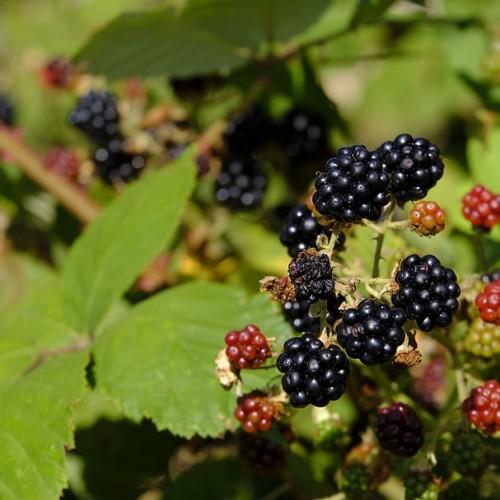
boysenberry
Rubus ursinus x idaeus
Cycle:
Perennial
Watering:
Frequent
Hardiness Zone:
3
Flowers:
Flowers In Summer
Sun:
Full sun, Part sun/part shade
Fruits:
Fruits In Summer Ready In
Edible:
Yes
Leaf:
Yes
Growth Rate:
High
Drought Tolerant:
Yes
Salt Tolerant:
Yes
Thorny:
Yes
Invasive:
Yes
Care Level:
Medium
watering
Water your evergreen blackberry deeply and thoroughly when the top inch of soil is dry to the touch. During dry periods, water more frequently, about every 5-7 days. In particularly dry spells during the summer, you may need to water your evergreen blackberry twice a week. During rainy periods, you should reduce the frequency of your watering. Be careful not to overwater; you should be able to easily pinch the soil between 2 fingers and it should feel only slightly damp.
sunlight
The evergreen blackberry (Rubus laciniatus) is an evergreen shrub native to North America. When it comes to sunlight, the evergreen blackberry needs a full sun to part shade location, receiving around 5-8 hours of direct sunlight each day. However, if the temperatures become very hot, some protection from the hottest part of the day is beneficial. Too much sun and heat can cause the plants to become dehydrated and burned. Therefore, if it is in a warm climate with consistently hot weather, it may benefit from some afternoon shade.
pruning
For evergreen blackberry, pruning should be done twice a year: once in the spring and once in the fall. In the spring, prune out all dead, diseased, and weak canes (stems). Also remove any canes that are more than 8 feet in length, as well as canes growing towards the interior of the plant. In the fall, prune back all of the long canes that weren’t removed earlier. Shorten all canes to 12-24 inches in length, especially the thicker canes. These canes should be pruned back to the same level as the newer and thinner canes emerging from the base of the plant. This will prevent overcrowding and promote stronger canes in the following year. Overall, pruning should be done judiciously and with care. Removal of too many canes at once can stress the plant and damage yields.
